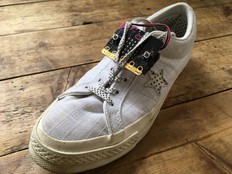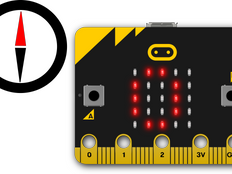步驟1:製作
它是什麼?
搖晃你的 micro:bit,系統會隨機指示你往哪個方向走。
你將學習變數、隨機數字、選擇以及比較邏輯積木的使用方法。
這兩支影片為您示範了製作內容和編碼方法:
介紹
編程指引
運作方式
- 這個程式使用一個變數,名為「方向」,來儲存一個隨機數字。
- 變數用來儲存電腦程式中可能改變的數字或值。
- 搖晃 micro:bit,將「方向」設定為介於 1 到 3 之間的隨機數字。
- 程式接著使用條件判斷和比較邏輯積木來測試變數的數值。
- 如果「方向」等於 1,那麼 micro:bit 的 LED 顯示器就會顯示一個指向北的箭頭。 如果「方向」等於 2,那麼箭頭就會指向東方。 否則,箭頭就會指向西。
- 為了讓電池更耐用,程式在箭頭出現後會暫停半秒鐘,然後清除畫面。
你需要的東西
- micro:bit (或,MakeCode simulator)
- MakeCode編輯器
- 電池組 (可選但建議)
步驟2:編碼
1# Imports go at the top
2
3
4
5from microbit import *
6import random
7
8while True:
9 if accelerometer.was_gesture('shake'):
10 random_number = random.randint(1, 3)
11 if random_number == 1:
12 display.show(Image.ARROW_N)
13 elif random_number == 2:
14 display.show(Image.ARROW_E)
15 else:
16 display.show(Image.ARROW_W)
17 sleep(2000)
18 display.clear()步驟3:進階
- 新增更多指令
- 使用按鈕來顯示「跳過」、「跑步」和「跳躍」的圖示。
- 將觸控計時器程式與本功能結合,打造可於體育課使用的激勵工具。
感謝加拿大艾伯塔省的教育工作者大衛·海,與我們分享這個絕佳的專案構想
This content is published under a Creative Commons Attribution-ShareAlike 4.0 International (CC BY-SA 4.0) licence.


